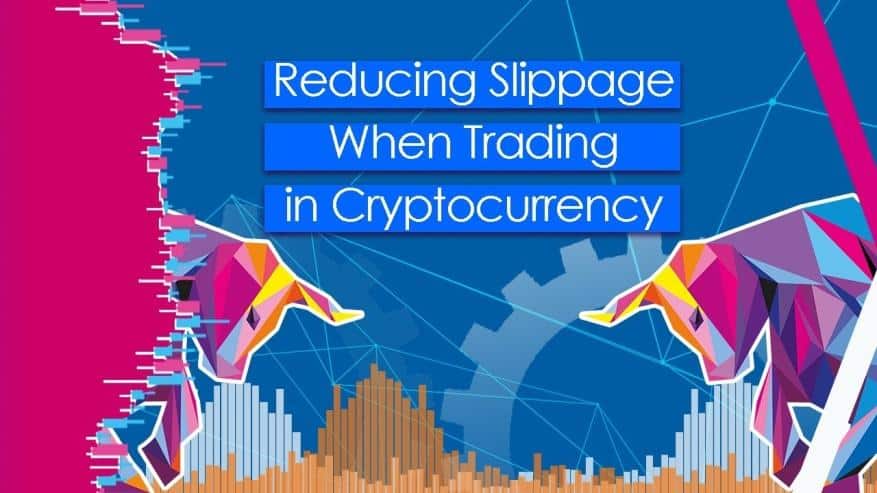Cryptocurrency trading entails people trying to profit from the price fluctuations that take place in exchanges. People buy and sell crypto pairs with the aim of generating a profit from the difference between the opening and closing price.
When traders place orders in crypto exchanges, they expect the orders to be executed at the exact price they have chosen. In most cases, that never occurs. The difference between the expected price and the level at which the exchange executes the order gives rise to a phenomenon often referred to as slippage.

The phenomenon occurs when crypto traders are forced to settle on a different price from the one they requested in the first place. If a trader wanted to buy BTCUSD at $43,345, but the exchange ended up executing the order at $43,400, the difference between the two price points amounts to slippage.
While slippage can occur in all markets, from stocks to forex, it is most common in cryptocurrencies due to the heightened levels of volatility in the nascent sector. In the cryptocurrency markets, tens of thousands of transactions occur every hour, translating a trigger point for wild swings experienced. Given the wild fluctuations in play at any given time, the bid and ask spread change multiple times in a short span of time, making it difficult for orders to be executed at defined price levels.
Market-moving news and developments affecting the broader cryptocurrency sector also tend to trigger extreme levels of slippage. Any time high profile personalities like Elon Musk tout cryptocurrencies, the markets go haywire, resulting in wild swings as traders jostle for positions making it difficult for exchanges to execute orders appropriately.
Additionally, low liquidity often causes orders to be executed at completely different prices, given the wide spreads in play.
Types of slippage in crypto trading
Positive slippage
Positive slippage results in a better outcome or rate for the person placing a buy or sell order in the cryptocurrency market. For instance, if a trader were to go short on Ethereum (ETHUSD) at 3,250, but the exchange ended up executing the order at $3,300, the act of selling at a much higher price would work in favor of the trader. This is because one gets a better rate than originally intended.
Similarly, if a trader wanted to buy ETHUSD at $3,250, but the exchanges ended up executing the order at a much lower price of say $3,200, the trader will end up with a positive outcome. This is because they get to buy at a much lower price, thus increasing the prospects of generating more profits on the price rallying afterward.
Negative slippage
Whenever an order is executed at a less favorable rate, it reduces the prospects of generating optimum returns when the buy or sell position is closed. For instance, if a person wanted to sell ETHUSD at $3,250 and the crypto exchange ended up executing the order at $3,200. The trader will end up with a less favorable rate than initially intended.
Similarly, in case a buy order of $3,250 gets executed at $3,300, the trader would have lost about $50 dollars in the less favorable rate, thus reducing the prospects of generating optimum returns.
Limiting slippage
Too much slippage while opening and closing positions can cost a lot of money if not factored into a trading strategy. While it is not possible to eradicate it completely, it is possible to limit its impact.

One of the proven strategies of limiting the pitfalls of slippage entails executing limit orders rather than market orders. With limit orders, a position is only opened when a given price level is hit. In case price gaps up or down, the order would be skipped, thus reducing the prospects of buying much higher or selling much lower.
While cryptocurrencies are extremely volatile financial instruments, limiting the negative impact of heightened volatility on slippage is possible. In most cases, one can avoid trading when the markets are extremely volatile, resulting in wild swings.
The chances of getting an order executed at the preferred point during wild swings are extremely low. However, an order would get executed at the preferred price when the market is settled, with the price oscillating up and down smoothly.
In addition, it is important to only focus on liquid cryptocurrency pairs. The likes of Ethereum, Bitcoin, Litecoin, and Ripple are known to command significant liquidity given the increased number of people trading them. Consequently, the prospects of getting an order executed at the desired level are usually high as there will always be a person on the opposite side of the trade.
When dealing with illiquid cryptocurrency pairs, wide spreads are a common occurrence that limits the prospects of orders filling at desired levels. The reduced number of market participants trading these pairs makes it extremely difficult to get an order filled at a favorable rate.
Crypto brokers control measures
Some crypto brokers offer tolerance control measures that allow traders to limit the negative impact of slippage. Such systems allow investors to set the level of slippage they are willing to accommodate, be it negative or positive, on a given position.
In this case, the broker is obliged to fill the orders within the tolerance levels. Whenever price tolerance goes beyond the set threshold, the order does not get filled, thereby limiting the impact of negative slippage.
Bottom line
The volatile nature of cryptocurrencies means slippage is an inevitable cost that traders should always be ready to contend with. Additionally, increased demand for blockchain-powered assets will always make it difficult for orders to be executed at desired prices.
Therefore, knowing the strategies to use to limit its pitfalls is the only option for anyone looking to generate optimum returns while trading various assets in the burgeoning sector. Watching volumes setting thresholds and trading outside volatile periods are smart plays that can help minimize the effects of slippage when trading crypto.



